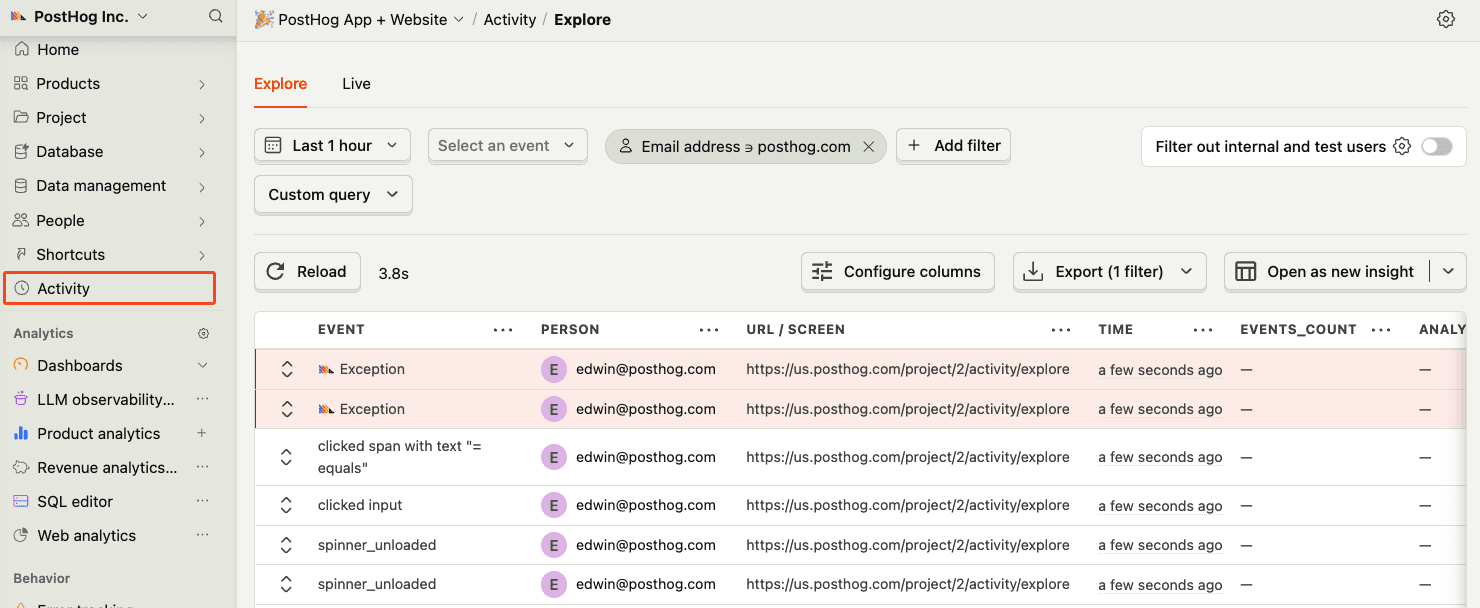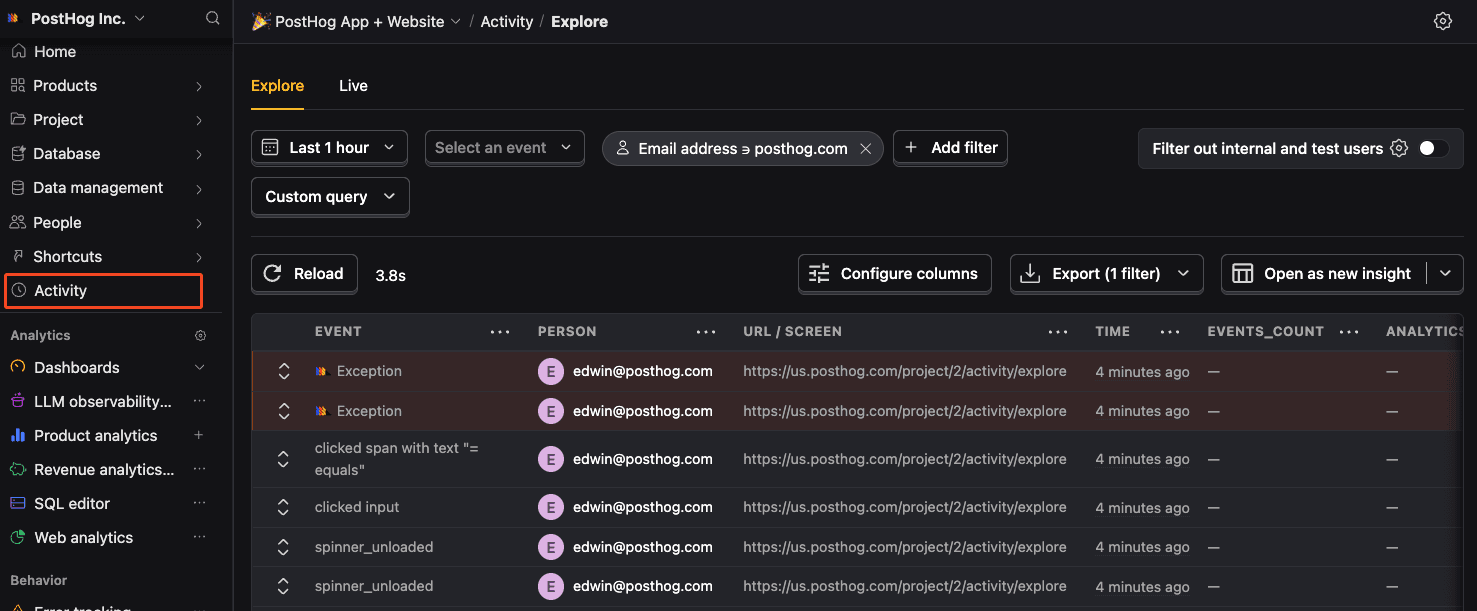Hono error tracking installation
- 1
Install PostHog Node.js SDK
RequiredError tracking enables you to track, investigate, and resolve exceptions your customers face. Start by installing the
posthog-nodepackage using your package manager:Terminal - 2
Exception handling example
RequiredHono uses
app.onErrorto handle uncaught exceptions. You can take advantage of this for error tracking. Remember to export your project API key as an environment variable.index.ts - 4










